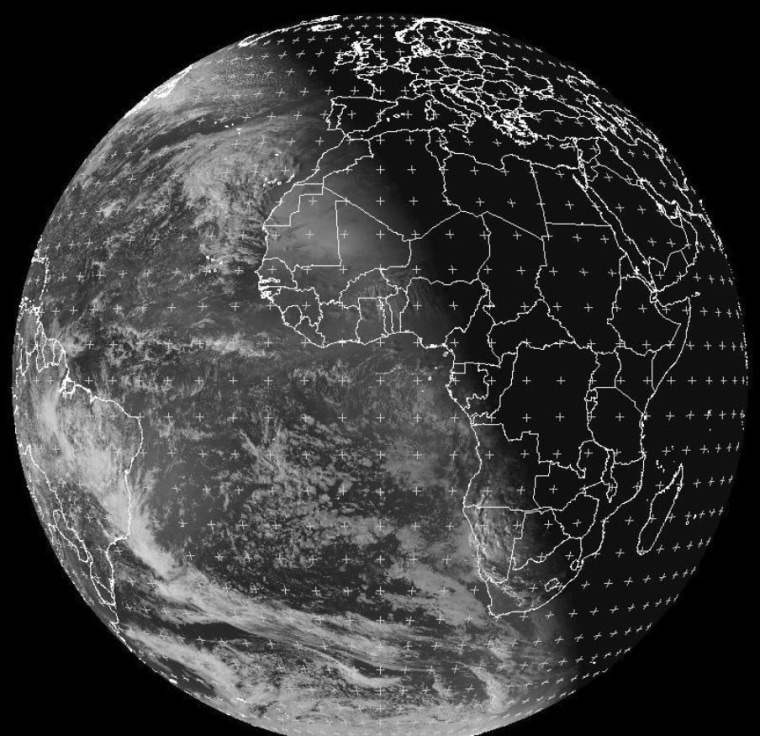Winter officially began in the Northern Hemisphere at 12:11 p.m. ET Saturday — and that moment marked the start of summer in the Southern Hemisphere as well. But why? This full-disk picture of Earth from Eumetsat's Meteosat 10 weather satellite shows why the 23.5-degree tilt of our planet's axis with respect to the sun is the principal factor behind our changing seasons.
Earth spins like an tipped gyroscope as it makes its yearly circuit around the sun, which means some parts of the world can get more exposure to sunlight than others, depending on the time of year.
Seasonal changes are marked by the June and December solstices, when the differences in solar exposure are most extreme; and the March and September equinoxes, when Earth's axis is positioned such that north and south get equal exposure. Those yearly milestones were so important that bygone civilizations (including Stonehenge's builders as well as ancient peoples who lived in Peru, Brazil and Guatemala) erected astronomical observatories to keep track of them.
Meteosat 10 belongs to a class of satellites that take in an unchanging view of Earth's disk. That makes it easy to show how the balance of daytime and nighttime changes over the course of the year. You can get a similar picture by looking at satellite imagery from the GOES-13 weather satellite.
This fresh-picked view of the solstice is part of the Cosmic Log Space Advent Calendar, which features views of Earth from space on a daily basis from Dec. 1 to 25. For more Advent calendar goodies with a space slant, check out The Atlantic's Hubble Advent Calendar, Zooniverse's Advent calendar and the Galileo's Pendulum Science Advent Calendar. And don't forget our Year in Space slideshow.
Previously on the Space Advent Calendar:
- Day 20: Christmas tree? No, it's Iceland
- Day 19: Japan's baby island is here to stay
- Day 18: Red and green lights glow in space
- Day 17: A child's face, visible from space
- Day 16: Where the Middle East's snow shows
- Day 15: Snaky Colorado river tricks the eye
- Day 14: A space farewell to Nelson Mandela
- Day 13: Happy St. Lucy's Day from space
- Day 12: Island of Love needs healing
- Day 11: A fractal puzzle, seen from space
- Day 10: London and Paris light the night
- Day 9: 'Starry Night' at sea
- Day 8: Mount Etna makes its mark
- Day 7: Staring down into Mount Vesuvius
- Day 6: Grand Canyon, seen and unseen
- Day 5: NASA salutes Nelson Mandela
- Day 4: Twin volcanoes act up in the Pacific
- Day 3: Syria's medieval marvel marred
- Day 2: Where the rain in Spain goes
- Day 1: Farewell, Earth ... Hello, Mars!
Alan Boyle is NBCNews.com's science editor. Connect with the Cosmic Log community by "liking" the NBC News Science Facebook page, following @b0yle on Twitter and adding the Cosmic Log page to your Google+ presence. You can also check out "The Case for Pluto," my book about the controversial dwarf planet and the search for new worlds.
